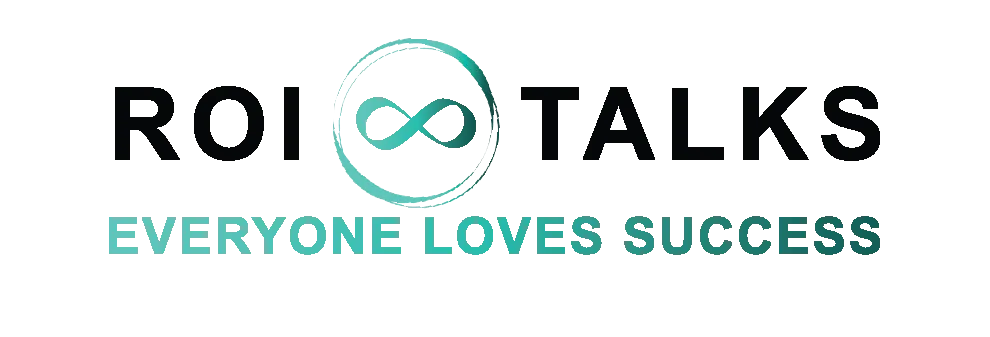Everyone Loves Success
ROI TALKS
Roi Talks Blog

The Art of Silence: Communicate, Connect & Collaborate Without Words
In a world where communication often takes place through digital devices, it's easy to forget the impact of nonverbal communication. The subtle gestures, facial expressions, and even moments of silence have the potential to convey deep meaning and forge strong connections with others. Embracing the unspoken art of communication can enrich our understanding of ethos, pathos, and logos, allowing for a more profound human connection.
Establishing Trust and Credibility Through Ethos
Ethos is the art of persuasion through the establishment of trust and credibility and is a crucial component of nonverbal communication. Our body language, eye contact, and the way we carry ourselves can either enhance or undermine the trust we are trying to establish with others. By embracing the power of silence and being mindful of our nonverbal cues, we can strengthen our credibility and the trust we build with others.
Creating Empathy and Understanding Through Pathos
Pathos is the art of persuasion through emotional appeal and plays a significant role in nonverbal communication. Our facial expressions, posture, and gestures have the power to convey emotions that transcend the barriers of language, creating a universal connection between people. By sharing a smile, a frown, or a knowing glance, we communicate our emotions and create a sense of empathy and understanding. Embracing silence can be an essential tool for conveying empathy and compassion. By thoughtfully using silence, we can deepen the emotional resonance of our interactions and create a stronger bond with those around us.
Enhancing Logical Discourse Through Logos
Logos is the art of persuasion through logical argument and may seem unlikely to find in the realm of nonverbal communication. However, our body language and gestures can convey subtle messages that help to support or refute the arguments we make verbally. By paying attention to these nonverbal cues, we can strengthen the logical foundations of our communication. Moments of silence can also allow both parties in a conversation to pause, reflect, and think critically about the points being discussed. This can lead to a more thoughtful, reasoned exchange of ideas, elevating the level of discourse and enhancing the logos aspect of communication.
Cultivating Deeper Communication, Connection & Collaboration
To fully harness the power of nonverbal communication and silence, it's essential to cultivate mindfulness and self-awareness. By becoming more attuned to our nonverbal cues and the signals of others, we can create more meaningful connections and navigate complex conversations with grace and skill.
Here are some techniques and practices that can help us cultivate mindful silence:
Observe your body language: Develop an awareness of your posture, facial expressions, and gestures. Notice any habits or patterns that may be undermining your communication, and work on adjusting them to convey your intended message more effectively.
Be present at the moment: Practice active listening by giving your full attention to the person you are speaking with. This means avoiding distractions and truly focusing on their words, tone, and body language. By being present in the moment, you can respond more thoughtfully and empathetically.
Embrace pauses: Instead of rushing to fill every moment of silence, allow for natural pauses in conversation. This gives both you and your conversation partner time to process information and consider your thoughts before responding. In doing so, you create a more meaningful dialogue.
Practice empathy: Put yourself in the shoes of the person you are communicating with, and try to understand their emotions and perspectives. By practising empathy, you can better tailor your nonverbal cues and moments of silence to support and enhance your connection.
Observe others: Take the time to observe and learn from the nonverbal communication of others. Watch how people in different situations and cultures interact, and take note of the subtle cues that convey meaning and emotion.
Impact of Nonverbal Communication on Our Relationships
Using ethos, pathos, and logos in unspoken communication can help us build connections and deepen our understanding of others. Here's how we can use these principles in our nonverbal communication:
Ethos: Use nonverbal cues such as maintaining eye contact and positive body language to establish trust and credibility.
Pathos: Use facial expressions, gestures, and moments of silence to convey emotions and create empathy.
Logos: Use nonverbal cues to support or refute arguments and allow for reflective pauses to enhance logical discourse.
By intentionally using ethos, pathos, and logos in our unspoken communication, we can strengthen our connections with others and enhance the quality of our interactions.
The power of mindful silence is a tool that can enrich our relationships, deepen our understanding of others, and contribute to a more compassionate and inclusive world. By cultivating mindfulness and awareness of our nonverbal cues, we can use the principles of ethos, pathos, and logos to create meaningful connections with others. By embracing moments of silence, we can deepen our emotional resonance and enhance our ability to reason and communicate effectively.
As we navigate the complex landscape of modern communication, let us not forget the power of silence and the art of nonverbal expression. By actively practising and promoting the unspoken art of communication, we can contribute to a future where trust, compassion, and understanding thrive, transcending cultural, linguistic, and social barriers to create a more harmonious and united global society.
ROI TALKS™
Marina Plaza - Office 1004 -1006
Dubai Marina, Dubai, UAE





